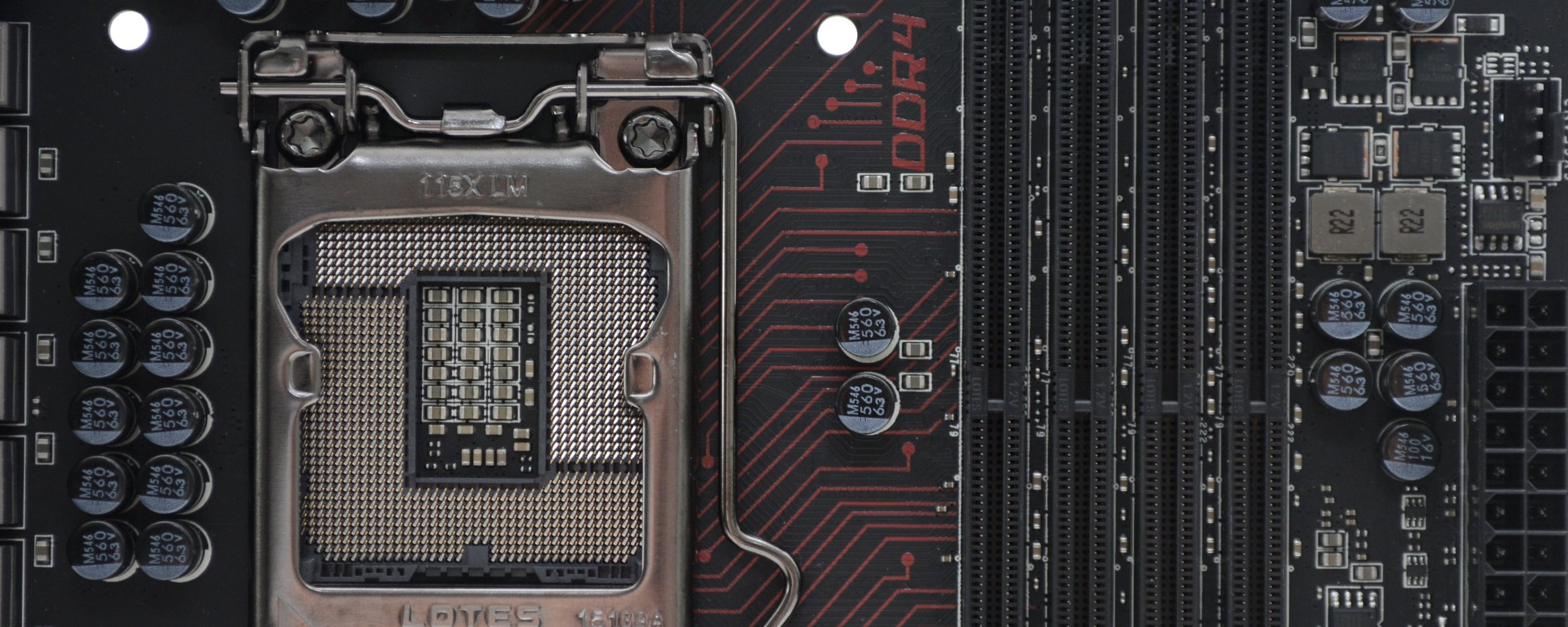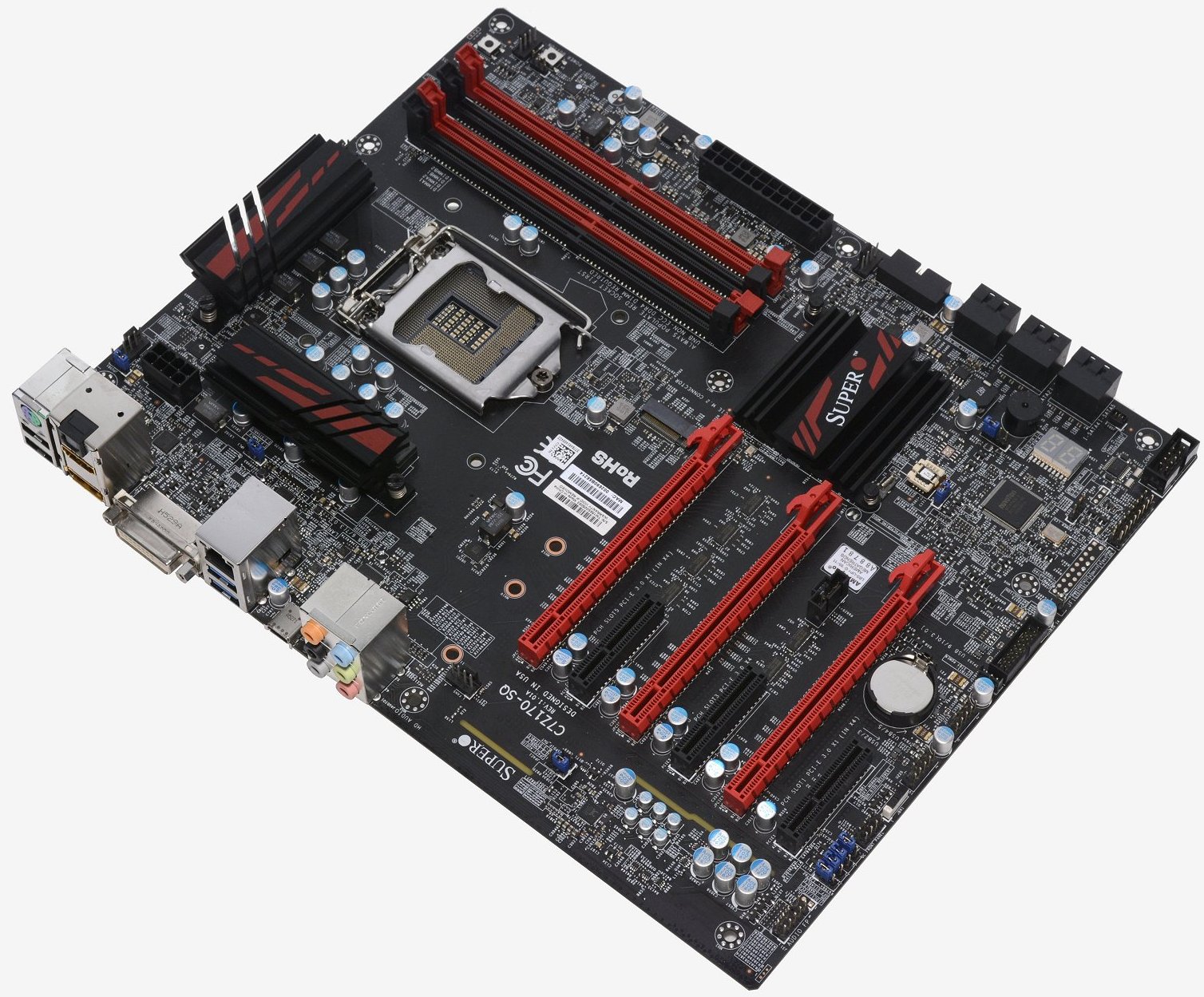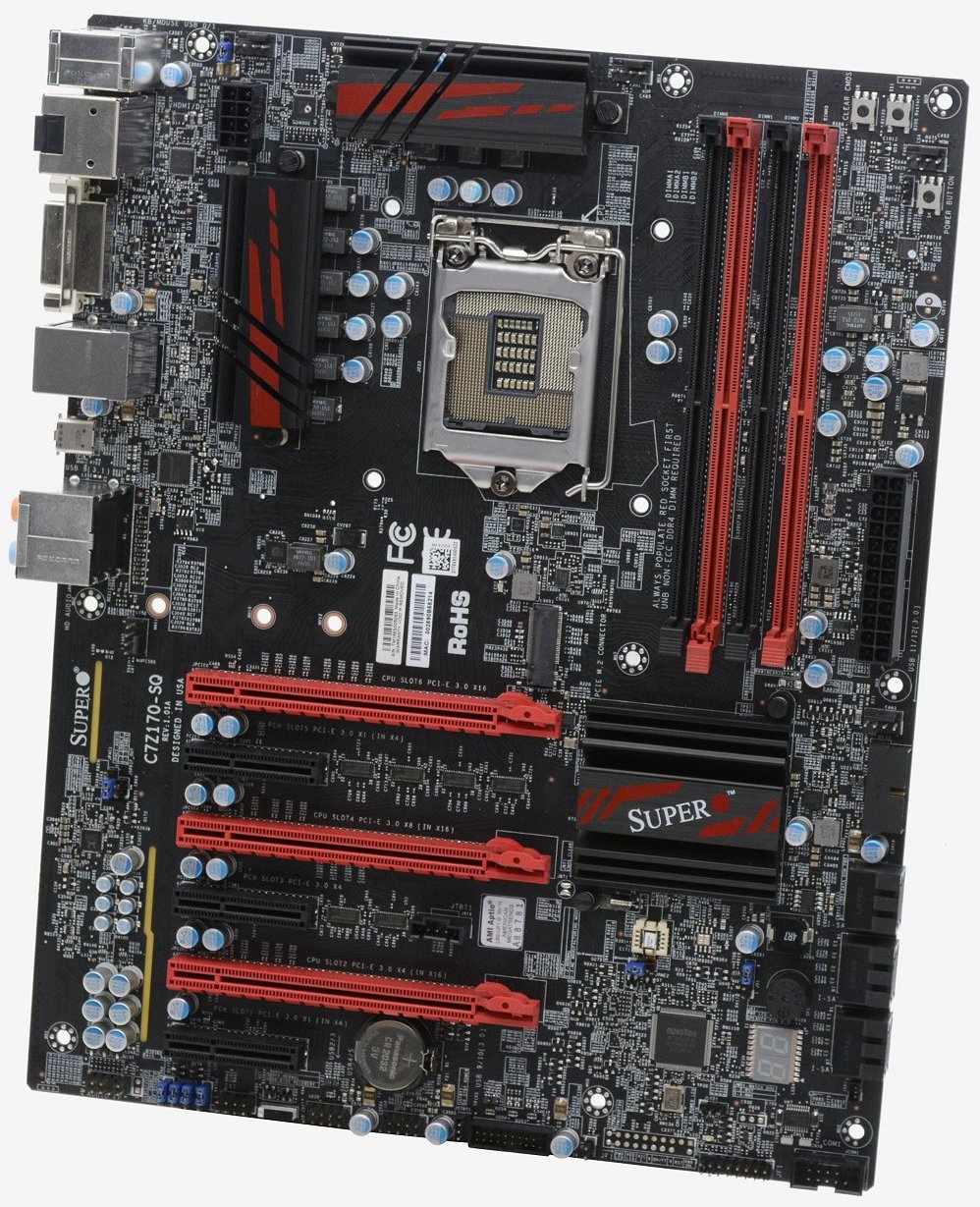Supermicro C7Z170-SQ
This is the first time we have featured a Supermicro motherboard in one of our roundups and that is down to the fact that the vast majority of their products are designed for the server industry. The company has been creating a select few consumer grade motherboards for a few years now, though we see the C7Z170-SQ as a serious push into this market.
Supermicro is hoping that its strong brand name in the server space will help push their products into the consumer market. This makes sense and it is probably why consumer brands such as Gigabyte make a lot of noise about their server grade "Black Series" server quality motherboards.
Like the MSI Z170A Gaming M7 and most of the Z170 boards featured in our roundup, the C7Z170-SQ features three full length PCIe x16 slots and it can support a single graphics card with x16 bandwidth or two sharing the primary slot bandwidth for a x8/x8 configuration.
Those wanting to run 3-way setups will be limited to x8/x4/x4 bandwidth whereas other boards offer x8/x8/x4.
Another issue for multi-GPU setups is the fact that the primary and secondary PCIe slots are only separated by a single slot. This means dual-slot cards will virtually touch one another and seriously limit air flow.
The only advantage to this design is that the full length M.2 slot can be accessed all the time, assuming you don't install a massive air-cooler on the CPU. It's worth pointing out that the M.2 slot is not SATA compatible, so will only support PCIe M.2 SSDs.
Along with the M.2 slot the only other storage options include the six SATA 6Gb/s ports provided by the Z170 chipset. This means there aren't any third party SATA controllers found on the C7Z170-SQ and there aren't any SATA Express ports either, though the latter shouldn't be an issue. In total, the C7Z170-SQ offers seven storage interfaces and all of them can be utilized at the same time.
The C7Z170-SQ uses the same Realtek ALC1150 codec as most of the other Z170 motherboards in this price range though there aren't any marketing buzzwords here, like Audio Boost 3 or SupremeFX 2015. The ALC1150 codec supporting 7.1 channel HD audio isn't found on an isolated section of the PCB, there aren't any Nichicon capacitors nor is there a 600Ω headphones amplifier.
Like its audio, the board's networking is very basic, lacking wireless options and offering a single Gigabit LAN connection through the Intel I219V.
When it comes to connectivity, the board only offers the standard six USB 3.0 ports and just two of them are found on the I/O panel. The additional two USB 3.0 headers found on the motherboard are found in two separate locations which we don't care for. Giving the C7Z170-SQ some credibility as a modern Z170 motherboard is a single USB 3.1 Type-C port on the I/O panel.
Speaking of the I/O panel, users will find a single PS/2 port, two USB 2.0 ports, two USB 3.0 ports, one USB 3.1 port, HDMI output, DisplayPort, DVI port, optical audio output, Gigabit LAN port and six audio jacks.
On the software side of things Supermicro hasn't developed any Windows utilities yet so users must take to the UEFI BIOS.
When compared to Asrock, MSI, Asus and Gigabyte, it's obvious that Supermicro has little experience developing consumer grade motherboards.
While functional, the BIOS is much more difficult to navigate and doesn't look nearly as nice as designs from its competitors. The BIOS isn't at all user friendly and will certainly overwhelm novice users.





